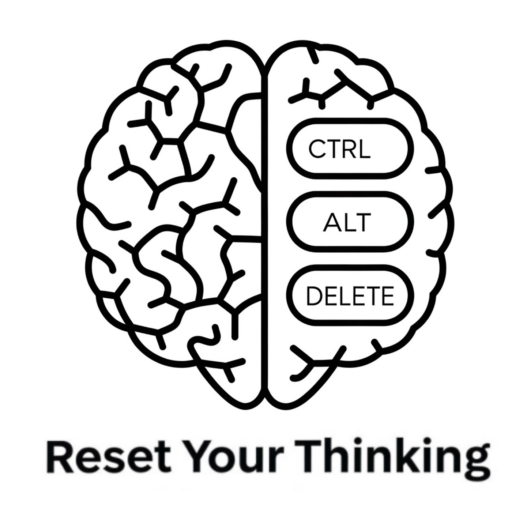This briefing document summarizes key themes and important facts presented in the provided excerpts from Parmy Olson’s book, Supremacy. The excerpts primarily focus on the formative years and early careers of two prominent figures in the field of Artificial Intelligence: Sam Altman, former president of Y Combinator and current CEO of OpenAI, and Demis Hassabis, co-founder of DeepMind. The narrative traces their distinct backgrounds, motivations, and early ventures, highlighting their ambition, intellectual curiosity, and leadership qualities, ultimately setting the stage for their significant roles in the development of advanced AI.
Main Themes and Important Ideas/Facts:
1. Early Life and Influences:
- Sam Altman: Grew up in a middle-class Jewish family in conservative St. Louis, Missouri. He displayed early signs of leadership, intellectual breadth (excelling in both literature and math), and a willingness to challenge social norms (openly discussing his sexuality in the late 1990s). His father, Jerry, instilled a sense of public duty, emphasizing the importance of finding ways to help others.
- Quote: Jerry told him that even if he didn’t have the time to help somebody, “you have to figure out how to do it anyway.”
- Demis Hassabis: A mathematical prodigy from North London, obsessed with games from a young age. He learned to play chess at four and was programming by his early teens, seeing computers as an “extension of his mind.” His diverse family background (mother from Singapore, father from Cyprus) and frequent moves shaped his unique perspective. He was driven by a desire to understand the universe and human consciousness, initially seeing AI as a tool to achieve this.
- Quote: “What fascinated me about them was that they were living worlds, and the game evolved with how you played it,” he says. “You could simulate a part of the world as a sandbox and you could play around it.” (referring to god games like Populous)
2. Education and Early Entrepreneurial Ventures:
- Sam Altman: Attended the elite private school John Burroughs, where he continued to take on leadership roles and occasionally challenged authority. He learned the importance of aligning with power and building a support network after facing backlash for a bold prank. He went on to Stanford University but found himself drawn to a wide range of subjects beyond computer science.
- Demis Hassabis: After briefly becoming a top chess player, he returned to school with a fascination for the mysteries of the universe, inspired by Steven Weinberg’s book on a “final theory.” He pursued computer science at Cambridge University (after a gap year working at Bullfrog Productions, where he co-designed the successful game Theme Park). He excelled academically despite a vibrant social life.
3. The Influence of Mentors and Early Ideologies:
- Sam Altman: Was significantly influenced by Paul Graham and the Y Combinator philosophy. Graham believed in the sacrosanct vision of start-up founders and encouraged a lean approach (“ramen profitability”). Graham saw in Altman a similar “hacker” mindset and a comfortable demeanor around older, influential people. Altman embraced the idea of start-ups as vehicles for making the world better, not just for personal enrichment.
- Demis Hassabis: Peter Molyneux, founder of Bullfrog Productions, became a mentor, recognizing Hassabis’s exceptional abilities and drive. Hassabis’s early interest in “god games” fueled his ambition to create simulations that could unlock deeper understandings of the world.
4. Early Career Paths and Contrasting Motivations:
- Sam Altman: Co-founded his first company, Loopt, through Y Combinator, focusing on a location-based mobile app. While Loopt achieved some traction and funding, Altman’s ambitions seemed to extend beyond a single product. He developed a reputation for bold risk-taking and a belief in tackling ambitious, world-changing problems. He transitioned to investing and eventually took over Y Combinator, aiming to foster a new generation of founders focused on significant societal impact.
- Quote: “Another mobile app? You get an eye roll,” Altman once said. “A rocket company? Everyone wants to go to space.”
- Demis Hassabis: Following Theme Park‘s success, he founded Elixir Studios with a vision for games powered by cutting-edge AI. Despite initial hype, Elixir eventually collapsed. This experience led Hassabis to focus on understanding the human brain as the key to creating truly intelligent software, pursuing a PhD in neuroscience. His PhD research on the hippocampus and imagination provided foundational insights for his later work in AI. His early thinking about AI was deeply intertwined with philosophical questions about consciousness, the universe, and even the potential for AI to understand a divine origin.
- Quote: “The human brain is a Turing machine,” he once said.
5. The Genesis of DeepMind:
- After his PhD, Hassabis co-founded DeepMind with Shane Legg and Mustafa Suleyman. Legg was a strong proponent of “machine superintelligence,” while Suleyman brought a background in conflict resolution and an interest in applying AI to societal problems.
- Early ideological differences emerged between Hassabis, who envisioned AGI as a tool to “solve intelligence and use it to solve everything else,” and Suleyman, who wanted to “make the world a better place.”
- Hassabis drew inspiration from the Manhattan Project, envisioning DeepMind as a focused scientific endeavor to crack the code of intelligence.
6. Early Investment and Concerns about AI Safety:
- DeepMind attracted early investment from Peter Thiel and Jaan Tallinn (co-founder of Skype). Tallinn’s investment was driven by a growing concern about the potential dangers of advanced AI, influenced by the ideas of Eliezer Yudkowsky. Tallinn and later Elon Musk (who also invested) viewed DeepMind with a degree of wariness, concerned about the potential for unintended negative consequences.
- Quote: Tallinn liked to point to the analogy of the tiger. “You could argue that a tiger is just a bunch of biochemical reactions, and there’s no point in being afraid of those.” But a tiger is also a collection of atoms and cells that can do plenty of damage if not kept in check. Similarly, AI might just be a collection of advanced math and computer code, but when put together in the wrong way, it could be incredibly dangerous.
- Musk also made an offer to acquire DeepMind with Tesla stock, which was declined due to concerns about his erratic behavior and the appeal of Tesla’s stock at the time.
7. The Acquisition by Google and Internal Dynamics:
- DeepMind was eventually acquired by Google. While this provided significant resources, it also led to internal discussions about DeepMind’s autonomy and ethical considerations.
- Hassabis and Suleyman presented a vision of DeepMind becoming a separate “global interest company” (like the UN or Gates Foundation) with an exclusive licensing agreement with Google, aiming to guide AI for good. However, this plan ultimately did not materialize.
- DeepMind developed a hierarchical culture based on academic reputation, with Hassabis focused on research and Suleyman on the broader vision.
8. The Rise of Competition and Ethical Challenges:
- By 2015, DeepMind, initially operating in a relatively open field, began to face the prospect of competition from Silicon Valley, particularly with the emerging vision of Sam Altman and Elon Musk to build AGI outside of Google.
- Ethical concerns surrounding AI began to surface, including potential biases in language models and the lack of transparency in how large tech companies were developing and deploying AI. Examples include gender bias in translation software and negative associations with certain demographics in large language model outputs.
- Quote: According to OpenAI’s own research, GPT-3 also tended to use more negative words when talking about Black people, and when it talked about Islam, it was more likely to use words like violence, terrorism, and terrorist.
- Google faced internal criticism regarding its AI ethics efforts, notably the controversy surrounding the departure of researchers like Timnit Gebru and Margaret Mitchell, who raised concerns about bias in large language models.
9. The Changing Landscape and the “Race” for AGI:
- The ambition to build Artificial General Intelligence (AGI) was transforming from a theoretical pursuit into a tangible “race,” with DeepMind and the nascent efforts of Altman and Musk (later to become OpenAI) as key players.
- The excerpts highlight the contrasting approaches and motivations of Altman (focused on broad impact and potentially economic abundance) and Hassabis (initially driven by scientific discovery and philosophical understanding).
- The failed attempts by DeepMind to spin out from Google underscore the complex dynamics of integrating ambitious, potentially world-altering technologies within large corporate structures.
Conclusion:
These excerpts from Supremacy provide a compelling introduction to the individuals and early events that shaped the modern AI landscape. They reveal the distinct origins, intellectual journeys, and entrepreneurial spirits of Sam Altman and Demis Hassabis. The narrative highlights their early leadership, their encounters with influential mentors, and the nascent stages of their ambitious pursuits in artificial intelligence. Furthermore, the excerpts foreshadow the emergence of ethical dilemmas and the competitive dynamics that would come to define the “race” to build increasingly powerful AI, ultimately setting the stage for the transformative developments hinted at with the mention of ChatGPT in later chapters.
RYT Podcast is a passion product of Tyler Smith, an EOS® Implementer (more at IssueSolving.com). All Podcasts are derivative works created by AI from publicly available sources. Copyright 2025 All Rights Reserved.

